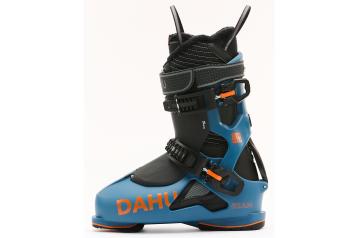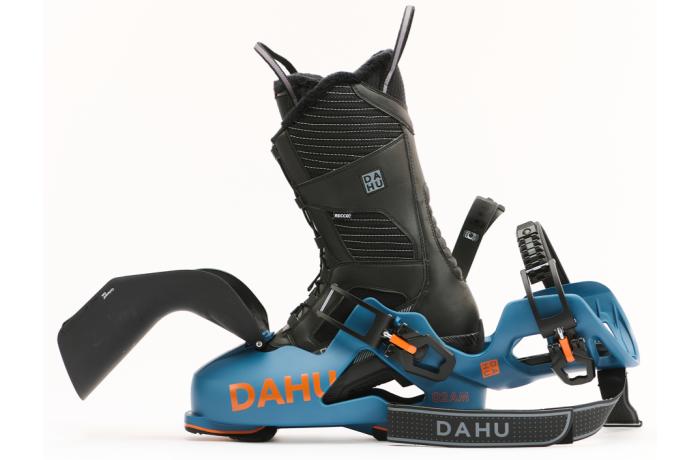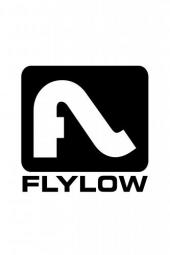Testers appreciated the improvements made to the Dahu 02AM MV 120, especially the newly anchored buckle straps that stay affixed to the cuff on its medial side for a more convenient and fumble-free buckle-up process. Their past full-disconnect mode was intended to aid in freedom of entry to the boot but testers didn't find that there was any new impediment to getting into the boot with this less fiddly redesign.
Speaking of ease-of-entry, it remains one of the Dahu design's best features for any skier who struggles with getting a ski boot on--and it provides two ways to achieve this! The most straightforward way that testers get the boot on isn't so different from any three-piece style boot. Unbuckle, pull the exterior tongue away from the cuff to the amount that's convenient and loosen the long lacing along the tall inner liner--then stuff the foot in that thing. It goes on like a nothing-but-net swish because the foot encounters no hard plastic on its way down into its well-shaped home. The other way to get the Dahu on is to don the liner, which Dahu calls the Cambium Boot (from the internal structure of plant tissues--the soft part inside the bark, specifically), and then slide it into the exterior shell. This second way takes a little practice to perfect the angle of attack needed for a smooth glide into place, where ultimately the liner outsole's tread design interlocks with the ribbed floor of the shell in a no-slop connection between the two. It's also the way that skiers can exit the shell and mosey-about in the Cambium Boot for any walkabout needs.
Once in and closed-up with the two oversized buckles and a power strap, testers unanimously applaud the well-sculpted medium-width fit of the 02 AM MV 120. it has a remarkably anatomical feel all along the lateral side of the forefoot, where the shell shape visibly arcs around the foot. Testers agree that the toebox and forefoot offer a generous amount of room for the foot to spread as needed but mention that the fit tapers incrementally to the rearfoot where it locks in the instep, ankles and heel in a well-crafted grip. Testers suggest that most minor fit issues a skier might encounter would be ironed-out by a proper liner heat molding session--and that's good news, as the bootfitter's grinders and stretching tools are less effective on the Dahu design than more traditional boot builds.
Testers unanimously love the tall and well-padded liner tongue that displaces shin pressure during flexion in a very even and comfortable manner that mates well with the stiffness and flex pattern of the shell. Taller testers found better fore-aft balance in the slightly high-on-the-leg-feeling cuff but our shorter guys could also choose to change the forward lean with the swap of a circular bushing mounted on the rear spine of the boot to gain a little more aggressive positioning. Testers mention that skiers with chronic shin bang complaints should do their best to get a Dahu on their feet for its flex feel alone.
Testers new to the Dahu boot were pleasantly surprised by how effectively it communicates with the ski and essentially skis like any other traditional boot design once they're sliding on snow. Testers with more experience in the Dahu are a little more critical and point to the longer-than-typical boot sole length as something that felt a little clunky to walk in and rendered quick moves on snow a bit muted. That said, these were minor complaints that didn't prevent anyone from enjoying their descent in the Dahu.







Kudos
Caveats